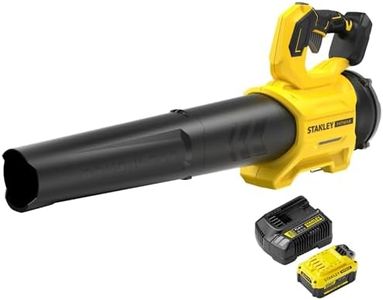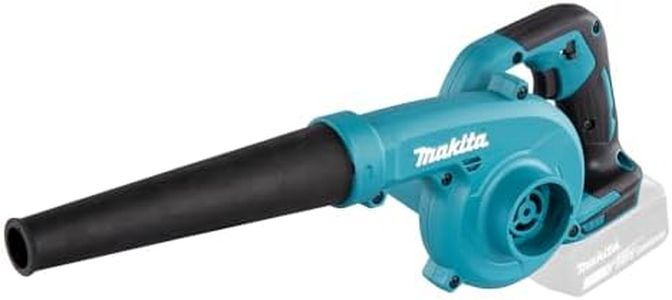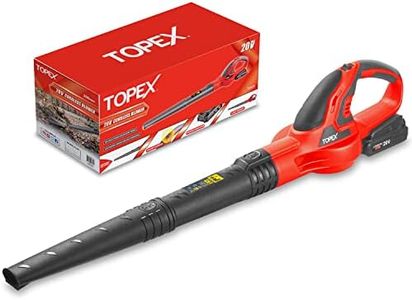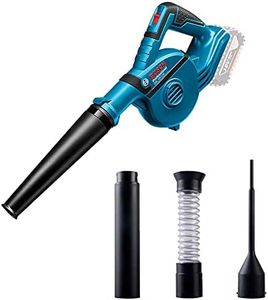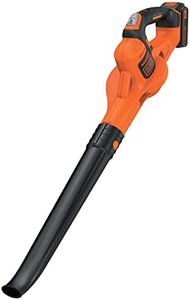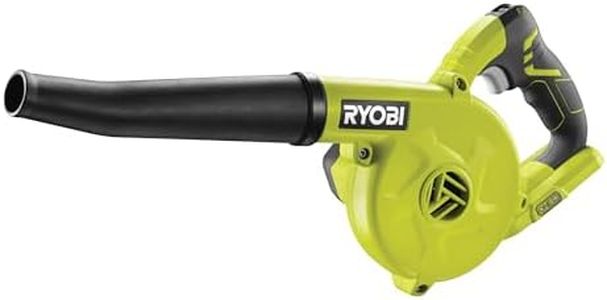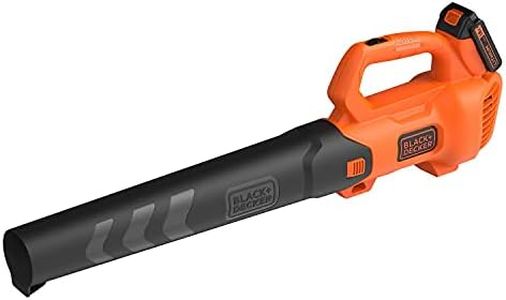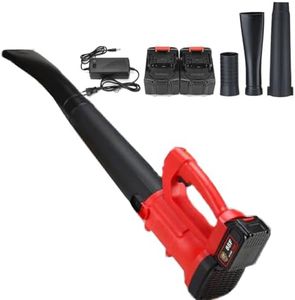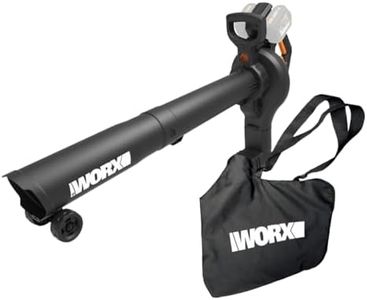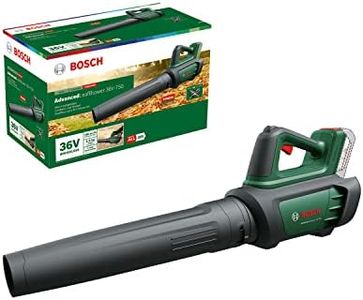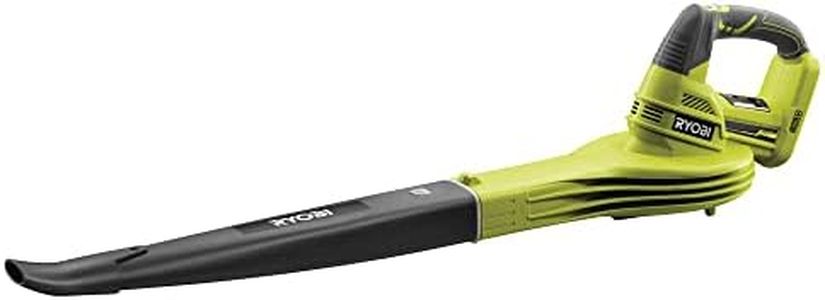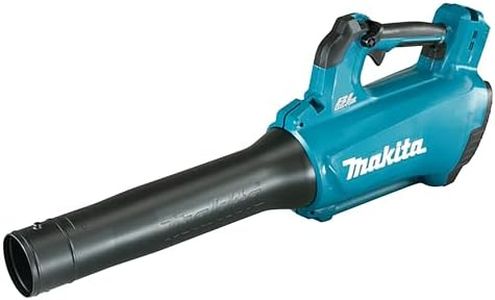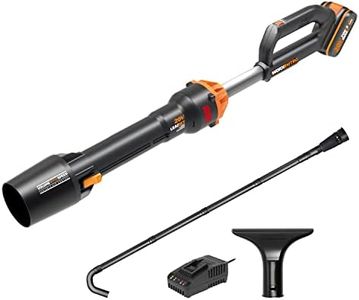We Use CookiesWe use cookies to enhance the security, performance,
functionality and for analytical and promotional activities. By continuing to browse this site you
are agreeing to our privacy policy
10 Best Cordless Leaf Blowers
From leading brands and best sellers available on the web.By clicking on a link to a third party's website, log data is shared with that third party.
Buying Guide for the Best Cordless Leaf Blowers
Choosing the right cordless leaf blower can make yard cleaning easier and more efficient. With so many models and features available, it's important to know which specs matter and how they match up with your needs. By understanding the following key specs, you can select a tool that suits your garden size, strength, and the type of debris you'll tackle, ensuring you get the best performance and comfort.Battery Voltage (V)Battery voltage reflects the power potential of the leaf blower's motor. Higher voltage generally means the machine can move more air and handle tougher jobs, like clearing wet leaves or larger debris. Cordless blowers typically range from 18V to 80V. Lower voltage models are lighter and suitable for small, light-duty jobs, like clearing grass clippings from a patio. Mid-range voltage fits most medium yards with normal leaf coverage, while high-voltage blowers are best for larger or heavily-treed yards. Think about the type and amount of debris you need to clear and the size of your area when deciding which voltage range fits you best.
Air Speed (MPH)Air speed, measured in miles per hour (MPH), indicates how fast air comes out of the blower. This is important because higher air speed can move heavier or stuck debris. Most cordless leaf blowers offer speeds from around 90 to over 150 MPH. Lower speeds are fine for dry leaves on hard surfaces, while higher speeds help dislodge and move damp, matted leaves or twigs from grassy areas. Match the air speed to the kind of debris and spaces you'll clean; more isn't always better if you mainly do light maintenance.
Air Volume (CFM)Air volume is measured in cubic feet per minute (CFM) and tells you how much air the blower moves. This matters because a higher CFM can clear a larger area faster and handle big piles of leaves. Cordless models vary from around 200 to 600 CFM. Smaller areas and less debris require less air volume, while bigger yards covered in leaves and twigs benefit from higher CFM. If you need to clear broad spaces quickly, focus on higher air volume, but if you're working in tighter areas or detail cleaning, lower CFM may actually be easier to control.
Run TimeRun time is how long the blower operates on a single charge. It's usually listed in minutes and can depend on the power setting you use. Longer run time is important for big yards or if you like to finish yard work in one go. Some models offer as little as 15 minutes at high power, while others can run for over 45 minutes or more at lower speeds. If your yard is small, short run times are not an issue, but bigger spaces mean you'll want a model with longer battery life or the ability to swap batteries.
WeightThe weight of the blower affects how comfortable it is to use, especially for longer periods. Cordless models can range from less than 5 pounds to over 10 pounds. Lightweight models are ideal if you have limited strength, plan to use the blower often, or need to use it at shoulder-height for tasks like cleaning gutters. Heavier models may offer more power but could tire you out faster, so always pick one that feels manageable for the duration and type of job you have in mind.
Noise LevelNoise level is often measured in decibels (dB) and directly affects your comfort and your neighbors’ peace. Quieter models are better suited for use in noise-sensitive areas or if you plan to use the blower early in the morning. While higher-powered units might be louder, many cordless blowers are quieter than gas-powered ones, making them a good fit for residential neighborhoods. If noise matters to you, look for models with a lower decibel rating.

